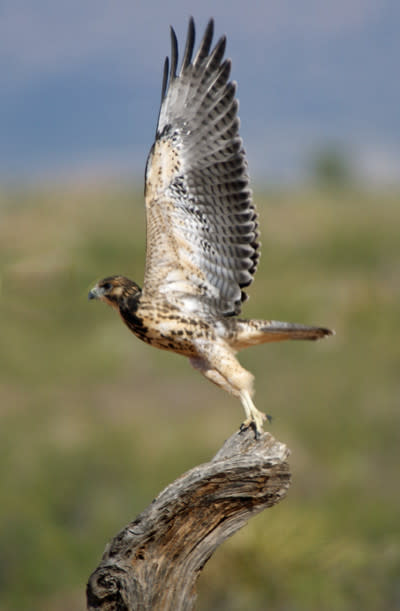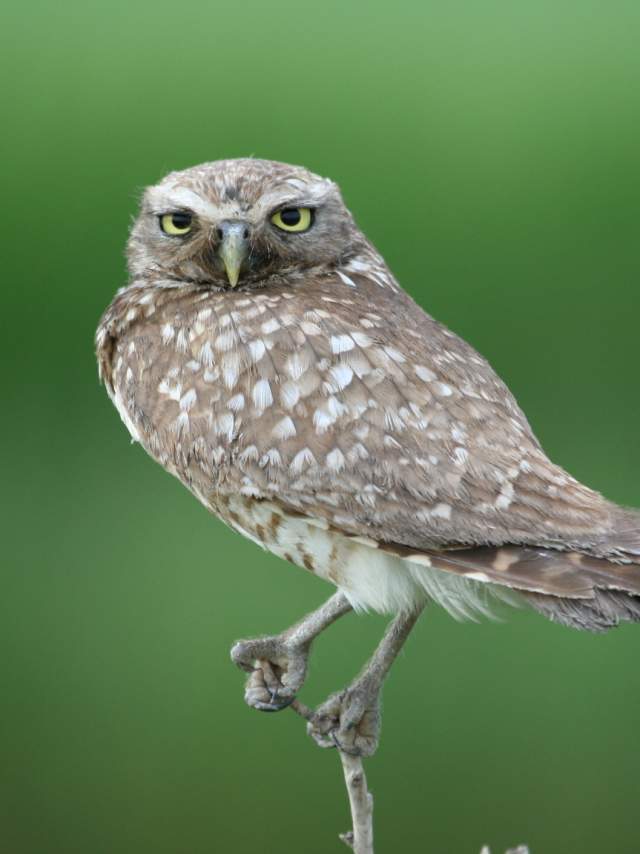Find Your Feathered Friends
Birding is the perfect love affair with feathered friends, with nature, and with conservation. People who visit these sites will not only enjoy the places and the birds, they will probably develop a new or strengthened commitment to conserving them.
Favorite birding sites can be somewhat personal choices, but staff at Audubon New Mexico suggests that individuals and families are unlikely to go wrong with these locations.
Orilla Verde Recreation Area is located along the Rio Grande one mile past the turnoff at Pilar and extends up the Rio Grande. A BLM visitor center is located on NM68 across the road from the village of Pilar. Bird habitats include the river, associated willows and tamarisk, mature cottonwood groves (especially at the campgrounds), numerous seeps and springs along the canyon walls, piñon, and rim rock. This is an excellent area for Bullock's Oriole in the spring and summer and for Piñon Jay, Canyon Wren, Rock Wren, and Bushtit all year. The area usually has Dipper all year and has had breeding Golden Eagle and Peregrine Falcon.
The Sangre de Cristo Audubon Society, our chapter based in the Santa Fe and Los Alamos area, points out many great birding hot spots, but Hyde State Park and Road and the Santa Fe Ski Basin capture the interest of many. The extended area near Hyde State Park and along the trails off the road to the ski area includes several hiking options, each of which has birding opportunities. Williamson's Sapsucker's (breeding), Hammond's and Cordilleran Flycatchers, Western Tanagers, Nuthatches (Red and White-breasted, Pygmy), Mountain Chickadees, Steller’s Jays, and Western Warblers are some of the species anticipated within the Black Canyon campground and trails. Further up Hyde Park Road, Blue Grouse are sometimes seen at elevations between the Borrego Trail to the ski basin.
The Santa Fe Ski Basin has a great trailhead for those who want to venture into the high mountain back country. Species expected include Hermit Thrush, House Wren, Junco, Cordilleran Flycatcher, Lincoln's Sparrow, Gray Jay, and Clark's Nutcracker.
We’d be remiss if we didn’t mention the Randall Davey Audubon Center east of Santa Fe where a wide variety of birds reside and visit during migration. Nestled at the mouth of the Santa Fe Canyon, our Audubon Center encompasses 135 acres and includes miles of hiking trails, a nature store, our state offices, and the historic home of artist Randall Davey. Favorites on Audubon’s grounds include the Spotted and Canyon Towhee, Hairy Woodpecker, Lesser Goldfinch, and Black-headed Grosbeak. Typical birds found are hummingbirds, nuthatches, juncos, warblers, woodpeckers, jays, and chickadees. The plant community along the Santa Fe River bottom provides a home to towhees, goldfinches, vireos, robins, and others. We offer free guided bird walks on Saturday mornings at 8:30 am.
Albuquerque-based but with a wide ranging area, the Central New Mexico Audubon Societyhas participated for over 5 years at the Sandia Crest in efforts to study the Rosy Finches that return there each winter, so it is no surprise to hear many folks mention the Sandias as one of their favorite birding spots.
A favorite on everyone’s list is the Bosque del Apache National Wildlife Refuge near Socorro. No secret here – Bosque del Apache is the quintessential birding spot for residents and visitors to New Mexico. Most people know about the cranes, geese, ducks and eagles who winter at the Bosque, but the refuge offers excellent birding year-round. Visit www.friendsofthebosque.org for a list of birds by season.
 The Mesilla Valley Audubon Society, our chapter located in Las Cruces, boasts that at Dripping Springs Recreation Area, owned by the Bureau of Land Management, trails are excellent year-round and show off many species of birds, including White-throated Swift, Black-chinned Sparrow and Scott’s Oriole. Additionally, at Leasburg Dam State Park, located on the Rio Grande about 20 miles north of Las Cruces, there are several different kinds of habitat in the area, which means many different kinds of birds can be found at and near the park. During migration different warbler and vireo species, along with towhees, grosbeaks, and orioles may be found in the brush along the sides of the irrigation canal (adjacent to the river) as well as in the trees and brush along the river. Also many ducks, cormorants, swallows, sparrows and birds of prey visit the park.
The Mesilla Valley Audubon Society, our chapter located in Las Cruces, boasts that at Dripping Springs Recreation Area, owned by the Bureau of Land Management, trails are excellent year-round and show off many species of birds, including White-throated Swift, Black-chinned Sparrow and Scott’s Oriole. Additionally, at Leasburg Dam State Park, located on the Rio Grande about 20 miles north of Las Cruces, there are several different kinds of habitat in the area, which means many different kinds of birds can be found at and near the park. During migration different warbler and vireo species, along with towhees, grosbeaks, and orioles may be found in the brush along the sides of the irrigation canal (adjacent to the river) as well as in the trees and brush along the river. Also many ducks, cormorants, swallows, sparrows and birds of prey visit the park.
The Southwest NM Audubon Societyhighlights the Big Ditch Park in Silver City, state parks along the Rio Grande like Elephant Butte Lake for the thousands of Western and Clark’s Grebe and other water birds, and the middle Gila River valley for Gila Woodpecker and Hooded Oriole. This southwestern quadrant of the state is well-known for its high diversity of birds, its scenic value and because it houses many of the Mexican specialty bird species that other U.S. birders want to see.
Rattlesnake Springs is an oasis in southern New Mexico located 5 miles south from the turn off to Carlsbad Caverns. At Carlsbad Caverns Visitor Center, there is usually a list of recently seen birds on the bulletin board at the parking area. The natural spring is a popular nesting area for many birds.
Bitter Lake National Wildlife Refuge is a gem located about 12 miles east of Roswell. Watch for quail, roadrunners, sparrows, ravens, pheasants, blackbirds, hawks, and falcons and check out the new visitor’s center for a list of recent sightings.
Thank you to the Audubon of New Mexico for sharing this guide.
MORE INFORMATION AND WEBSITES
Of course, this list isn’t exhaustive and every part of New Mexico has incredible birding hot spots. There are four Audubon chapters and many bird clubs around the state that offer field trips throughout the year. The website at nm.audubon.org, linked to the right, has resources and links to birding groups in Farmington, Ruidoso, Roswell, Carlsbad, Las Cruces, Silver City, Albuquerque, Santa Fe, and El Paso, Texas.
Fall migration is an incredible time of year to get your family connected to birds, nature and to conservation. Get out and start watching. Let yourself be inspired by the magic of birds. You’ll have a great time and maybe discover a special birding spot of your own.



